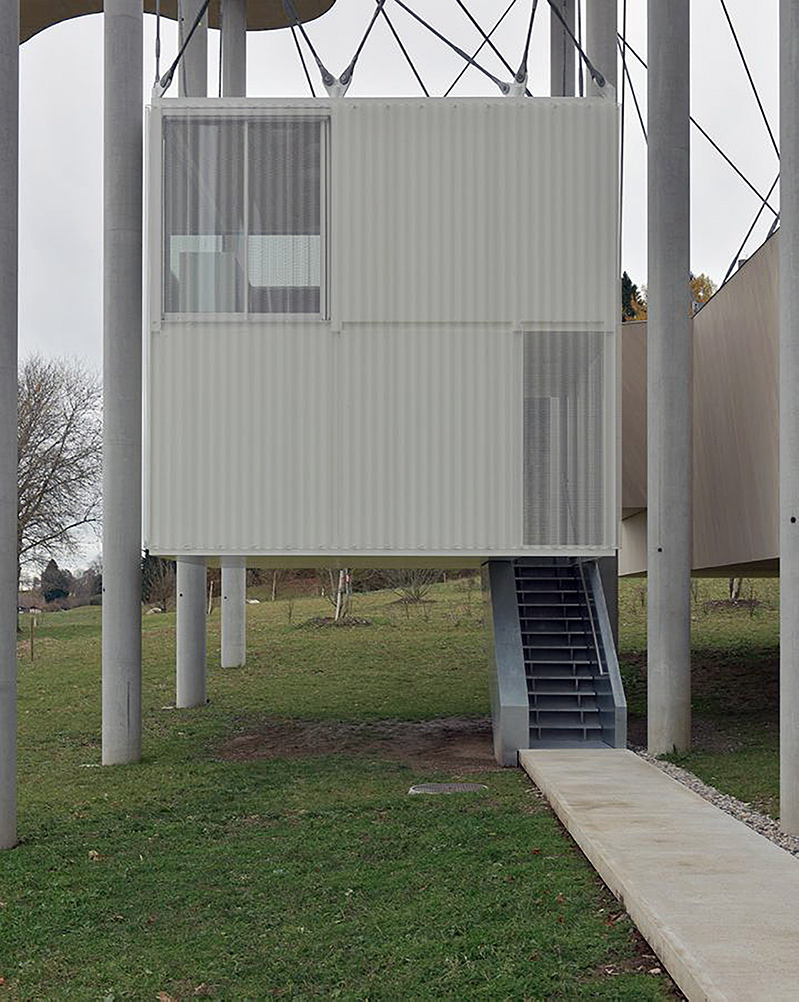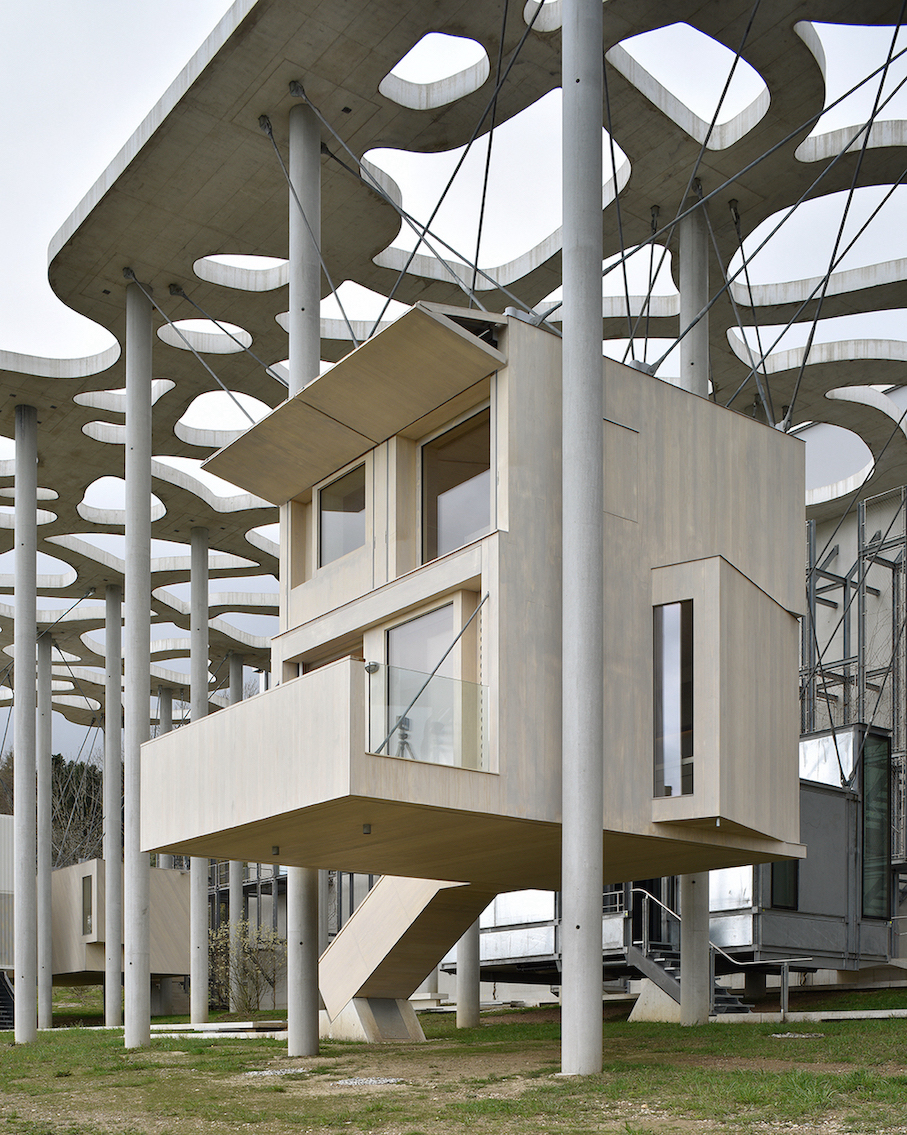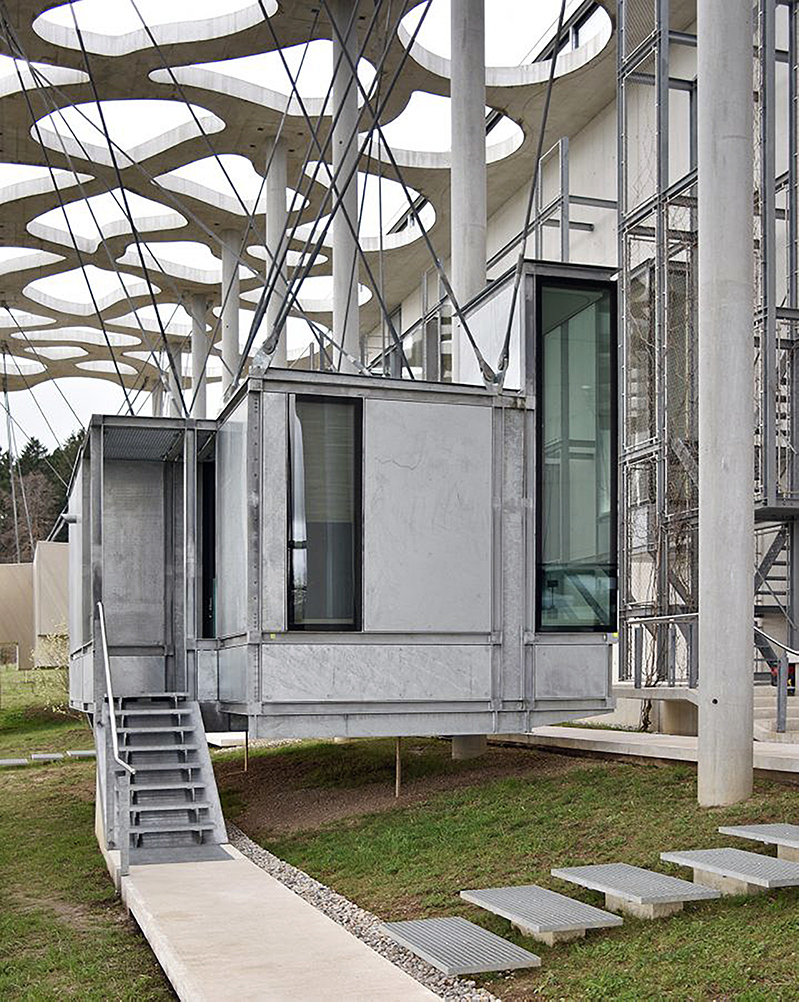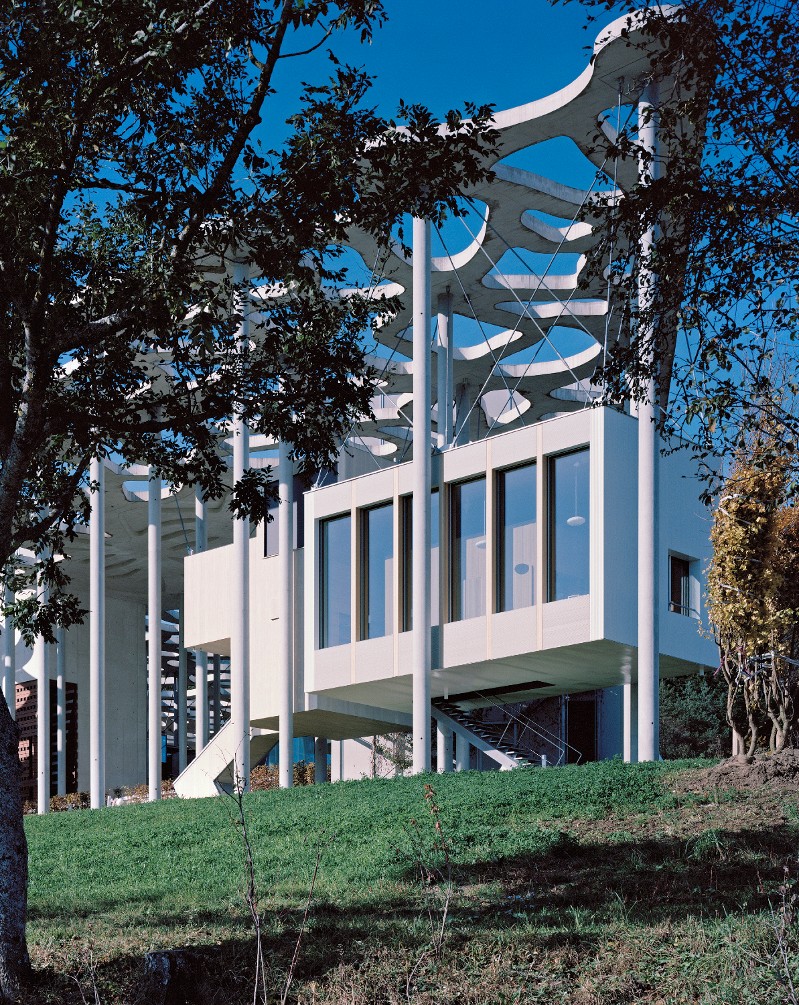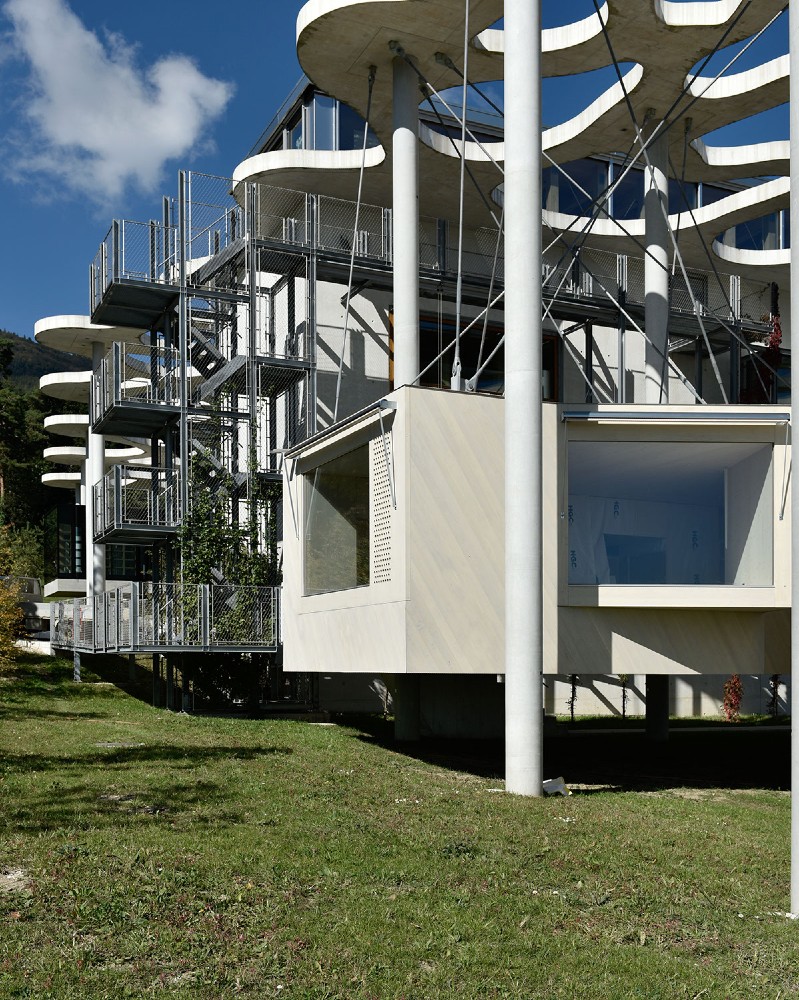The Jan Michalski Foundation is a place entirely dedicated to writing and literature, where a writers’ residence, a library, an auditorium and an exhibition hall coexist.
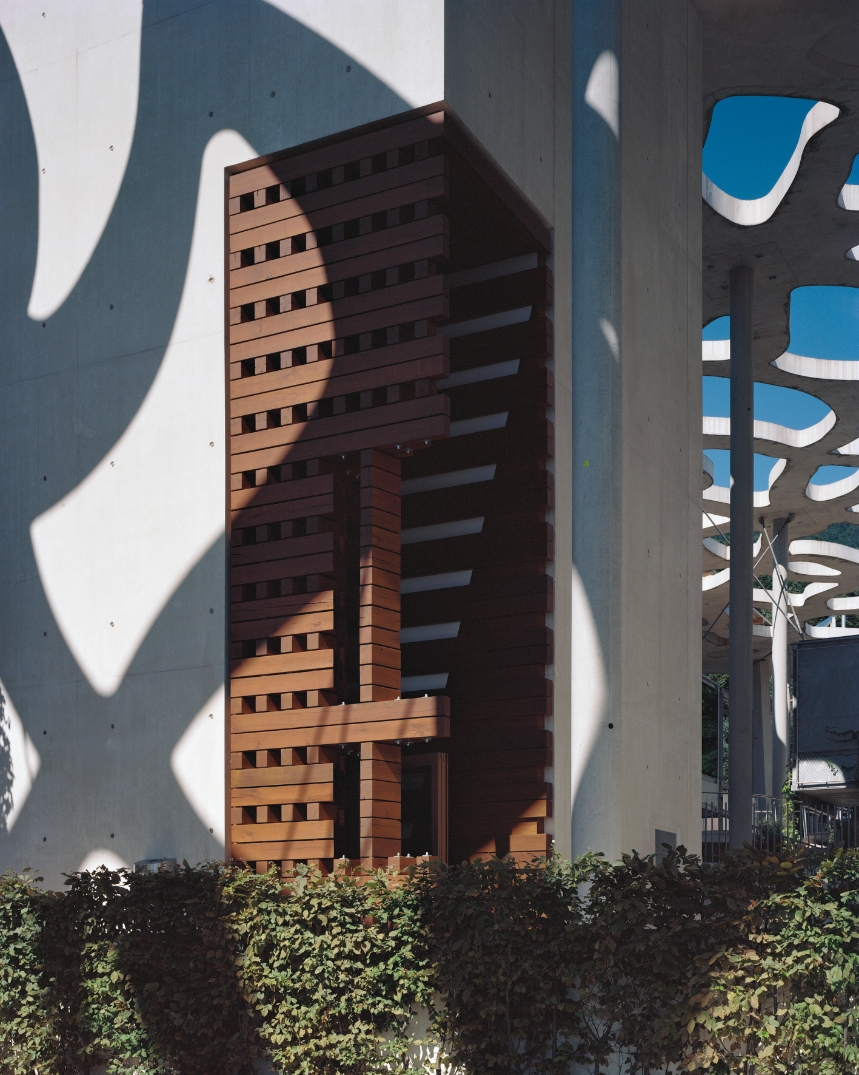
© Tonatiuh Ambrosetti
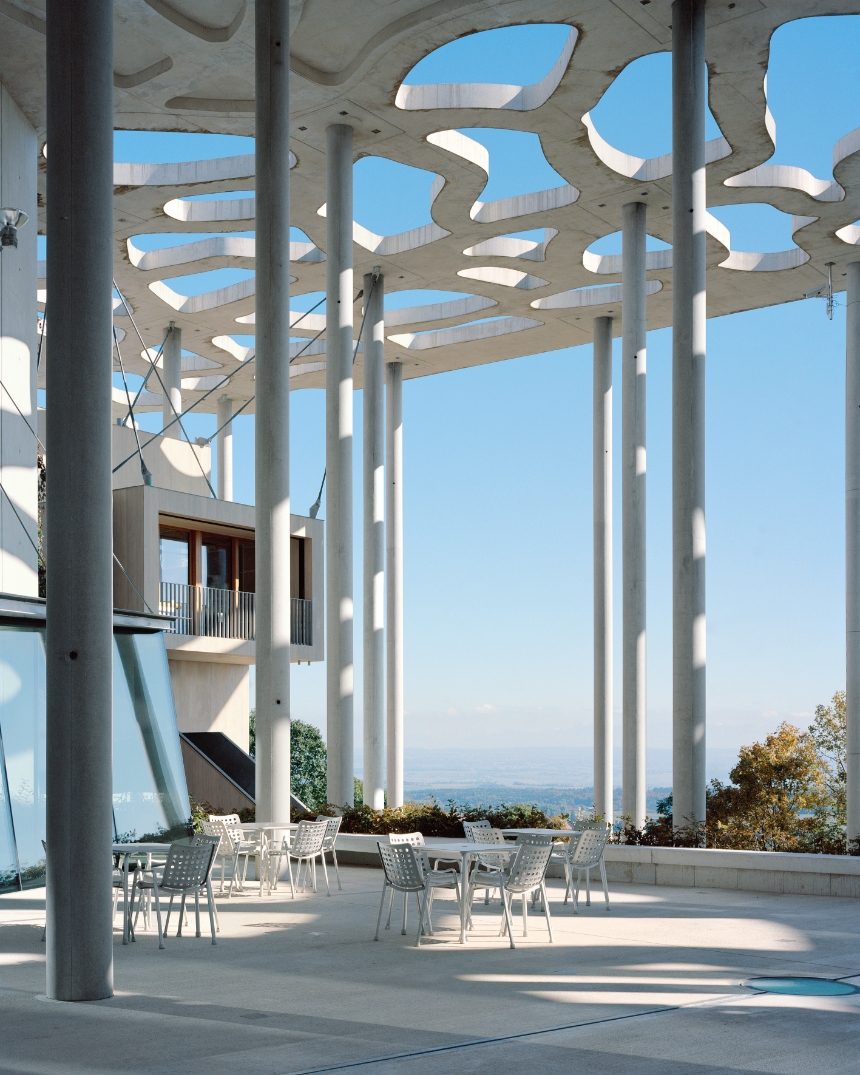
Originally imagined as a small community sheltered beneath a canopy and completely surrounded by nature, an inspirational setting at the foot of the Jura Mountains in Switzerland, the Jan Michalski Foundation was created in 2004 by Vera Michalski-Hoffmann in her husband’s memory to perpetuate their common commitment to those who devote themselves to the written word. The Foundation’s mission is to foster literary creation and encourage the practice of reading through a range of initiatives and activities. These include mounting exhibitions and cultural events that have a connection with writing and literature, making a large multilingual library available to the public, awarding an annual prize in world literature, granting financial support, and hosting a writer-in-residence program.
It offers a unique communal venue that is turned outward to the world at large: a place where writers, artists, and the public come together to keep culture alive and ideas flowing.
History
Jan Michalski was born in 1953 in Poland and earned a degree in sociology and philosophy at the University of Lublin before studying political science in Bruges, Belgium, and Geneva, Switzerland. Vera Michalski-Hoffmann was born in Basel in 1954 into a family of mixed heritage, Swiss, Russian, and Austrian. She is a graduate of what was then known as the Graduate Institute of International Studies, Geneva.
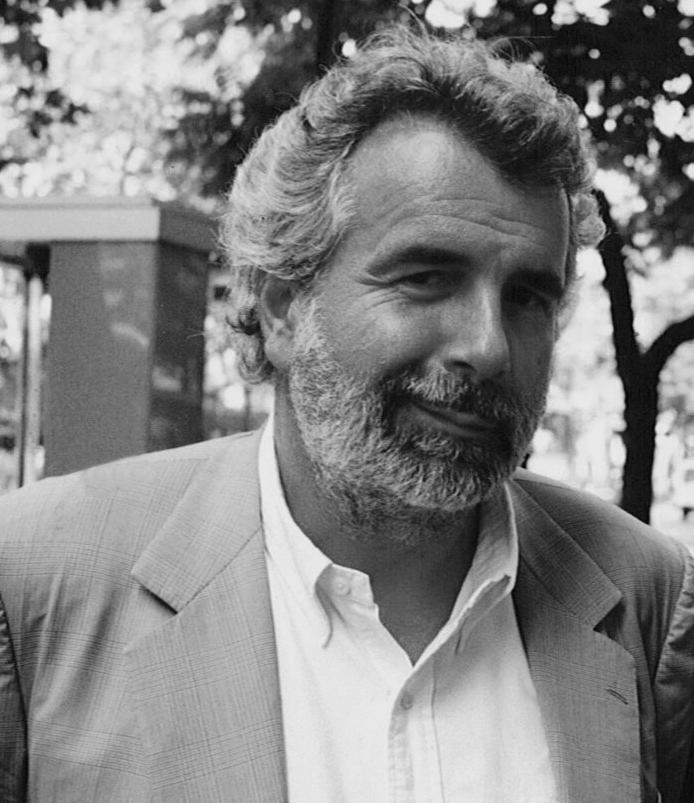
Jan Michalski
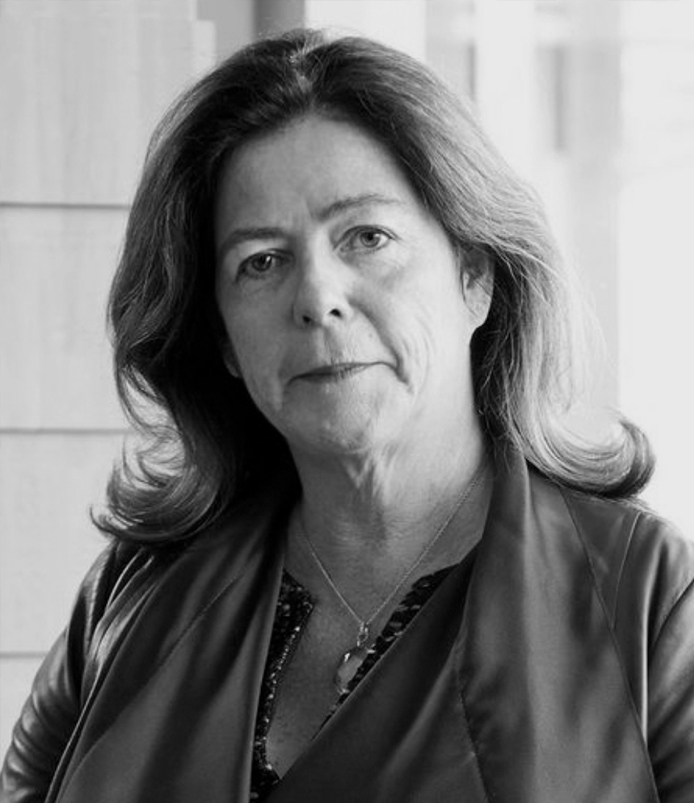
Vera Michalski-Hoffmann
In 1986 the two launched a publishing house in Switzerland, Éditions Noir sur Blanc. Their ambition was to build literary bridges between Eastern and Western Europe. Driven by the conviction that the process of mutual understanding between peoples plays out in culture, they developed a catalogue of Slavic writers, both classic and contemporary, in French translation. They then founded Oficyna Literacka Noir sur Blanc in Warsaw in 1990, built around the Polish translation of Western writers like Henry Miller, Charles Bukowski, Paul Auster, Blaise Cendrars, Nicolas Bouvier, Manuel Vazquez Montalban, Lawrence Durrell, Donna Leon, Umberto Eco, and others. In Paris they reopened the historic Polish bookstore Librairie polonaise and acquired two other publishing houses, Éditions Phébus and Éditions Buchet-Chastel. Over the years Groupe Libella took shape and grew in both size and importance. This publishing group has been active internationally in Europe for some time and today represents nearly a dozen publishers in a range of fields – literature, travel, essays, documents, music, ecology, visual arts, and creative hobbies.
Vera and Jan Michalski had been living in the village of Montricher in Vaud since 1983 when, to broaden their publishing activities, they began to think of building a literary center, a place that would foster exchange and interaction in the unique natural setting offered by this region at the foot of the Jura Mountains. After the untimely death of Jan Michalski in 2002, Vera Michalski-Hoffmann carried on with the project and the Jan Michalski Foundation was created in 2004, so that their common commitment to those who work with the written word and to the very practice of reading will not disappear.
Mission
To open a center that is open to the world
To fight against the erosion of reading
To foster literary creation
To offer the chance to read, see, and hear the written word in all its forms
Architecture
Wallpaper*
Design Awards 2018
Best Retreat

© Leo Fabrizio
A former summer camp
Boasting a large house and a chapel that were joined by a covered walkway, the Bois Desert summer camp had made a deep impression on many of the region’s inhabitants. The Lausanne parish had regularly hosted a camp at the site, and the children of the village of Montricher often spent the day there on school outings. Extensive games had been played on the playground’s covered terrace and baptisms celebrated in the charming little chapel. When Vera began thinking about renovating the site, Bois Désert had already been standing empty for several years. She was nevertheless attached to the memory of Bois Désert and initially considered restoring the existing buildings without carrying out major changes. Vera turned to the architects Vincent Mangeat and Pierre Wahlen, associates at a firm in Nyon, but it quickly became apparent that the buildings were in too great a state of disrepair to make appropriate use of them. The farmhouse and chapel were therefore torn down to make way for a more ambitious construction project, a new complex that would respect the original layout of the different buildings.

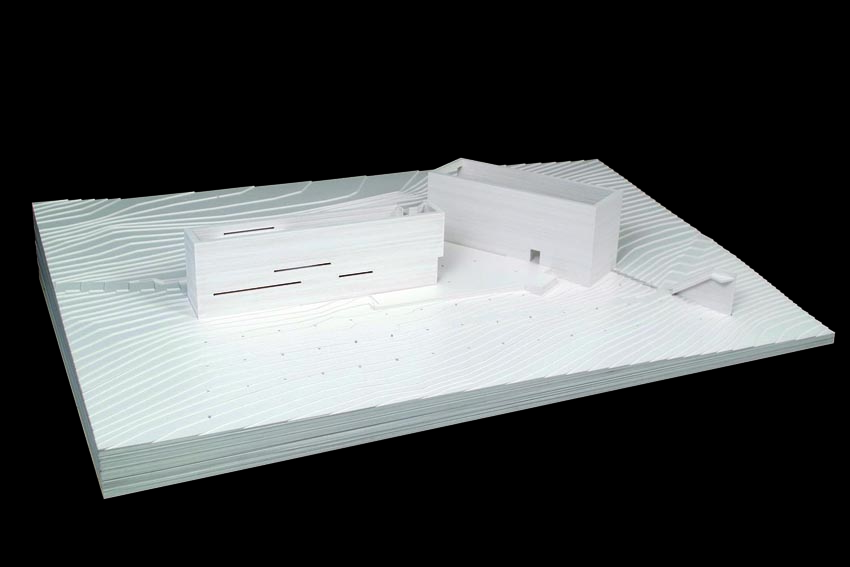
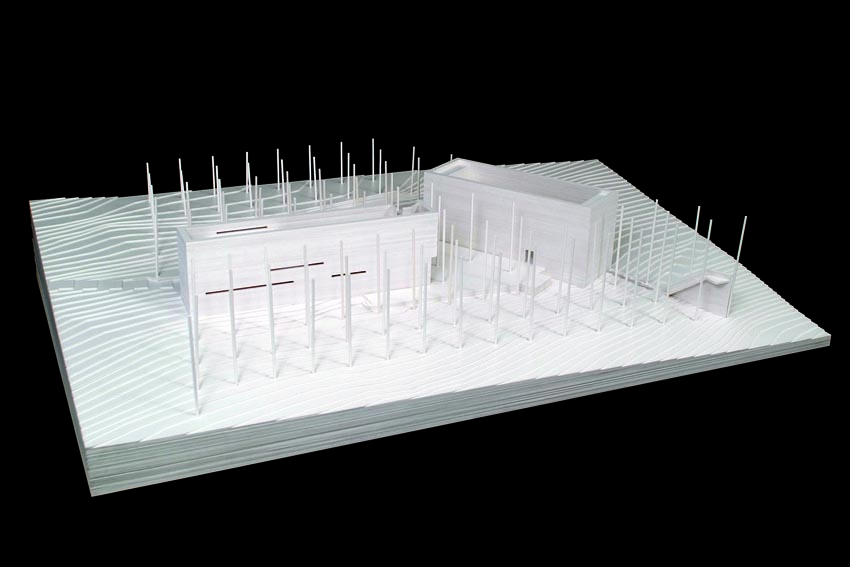
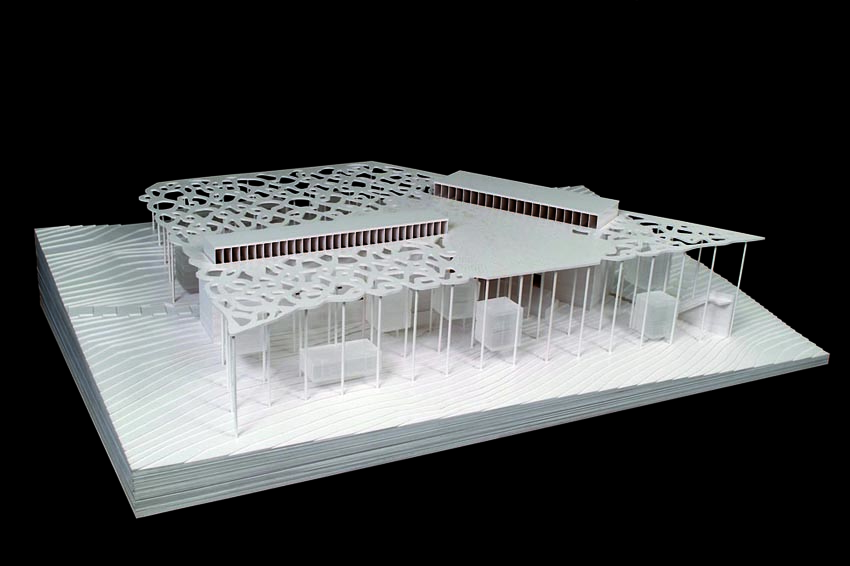
The main buildings
The architects initially drew up plans for a library to be built exactly where the camp house had stood and an auditorium in place of the chapel. The auditorium would have an exhibition venue and a lobby. This was a response to the wish for a vibrant and dynamic site that was meant to serve a number of functions, including hosting exhibitions and events as varied as talks, readings, even stage performances. In a second phase, the overhead shelter was to be replaced by a broad openwork roof called the “canopy,” a reference to the tops of trees. The columns supporting this canopy are meant to give the impression of a forest of concrete trees taking over from the natural ones all around, plunging helter-skelter down the slopes of the Jura and ending their race in the middle of the Foundation.
Work began in 2009. The library, the building housing both the auditorium and the exhibition space, and the canopy connecting the two were completed in 2013. This vast complex made of light-colored concrete has a number of different pathways leading through it, heightening the overall appeal, while a plaza emerges at the center of the site, affording an exceptional view of the Alps and Lake Geneva. The library comprises five visible levels bordered by passageways and filled with oak bookshelves, along with two underground levels where books in transit are stored. The other building has an exhibition gallery on the ground floor and a basement auditorium, as well as the lobby and numerous technical rooms.

© Leo Fabrizio
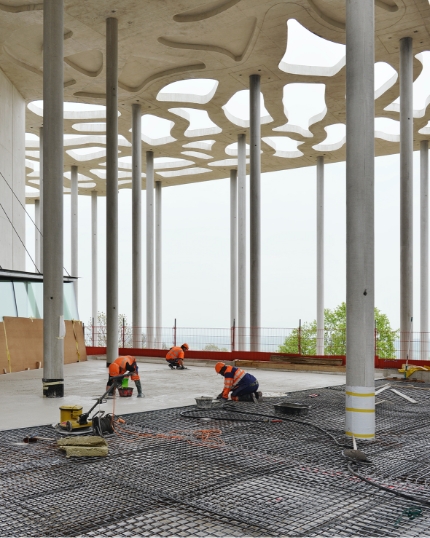
The “cabins”
In 2014 the second phase of construction work began. After the so-called “anchor” buildings were put in place, attention then turned to constructing the “cabins.” It was decided that other architects would graft various structures onto Mangeat and Wahlen’s canopy to fill out the Foundation’s architectural program in accordance with its needs. Seven of these cabins were built for lodging writers in residence, while four others house the site’s administration and operational functions. Mangeat and Wahlen were awarded the design and construction of the Foundation’s offices, along with a conference room and one writer’s cabin. Meanwhile, a design competition was opened to architects the world over for the remaining cabins, the idea being that a small settlement of “houses” in a range of different yet complementary styles would spring up around the plaza. The project specifications made it clear among other things that the architects had to work with the materials that were already employed on site, viz., concrete, wood, metal and glass. Each writer’s cabin had to include a living space with a kitchenette, bathroom, and bedroom, as well as a module for working and writing. The cabins, moreover, had to be truly suspended from the canopy by a steel tie and secured to the ground using either a concrete base or stairs connected to such a base.
The following firms were eventually selected: the Swiss architectural firms Décosterd, Bonnet, AFGH (Andreas Fuhrimann and Gabrielle Hächler), and Schaub Zwicky Architekten; the Norwegian firm Rintala Eggertsson Architects; the Chilean firm Elemental (Alejandro Aravena); the Brazilian firm Studio MK27 (Marcio Kogan); and finally the Japanese firm Kengo Kuma and Associates.
This second phase of construction, which also includes landscaping around the buildings, was completed in December 2017. The Jan Michalski Foundation as it appears today in Montricher is the outcome of imaginative work by a number of architects with a range of outlooks and styles, all in the service of a project designed to give books and writing an outstanding setting.
You can read about the design of the different cabins on this page: Residence
Team
Sabine Beaud
Sonia Branco
Laureline Dupuy
Anne Laffely
Kirsten Romeda
